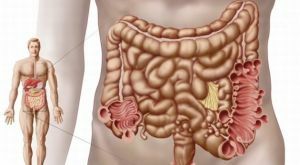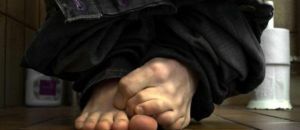 The diverticulosis of the intestine proceeds without any special symptoms, but most often it resembles the signs of other diseases of the large intestine.
The diverticulosis of the intestine proceeds without any special symptoms, but most often it resembles the signs of other diseases of the large intestine.
It has long been proven that the degree of diverticulitis increases with respect to human age. This disease manifests itself up to forty years in 10% of cases, and with the age of more than 80 years, its threat is 50-60%.
The symptomatology of the disease will differ as to which part of the intestine the diverticulum will be located in.
Basically, they can be diagnosed in the distal parts of the intestine, the sigmoid colon, and only 10% falls on the defeat of all parts of the colon.
Contents of
- What is a disease?
- Causes of violation of
- For every taste and color of
- Symptomatic of
- disease How is the disease diagnosed?
- Therapy of the disease
- Traditional medicine recipes
- Therapeutic diet
- Possible complications
- Preventive measures
What is the disease?
Diverticulosis of the large intestine is a disease that can manifest itself under the symptoms of other diseases.
Most often, its manifestations resemble signs of appendicitis, various diseases of gynecological origin, as well as renal colic. You should also know about the existence of a certain symptomatology, which allows you to diagnose the disease.
This disease should be understood as a strong inflammation, which is usually localized in the intestinal tract. Due to the accumulation of intestinal contents in the diverticula, pathogenic bacteria and viruses enter the body, which in turn provoke the inflammatory process.
Causes of Violation of
It is known that diverticula are in the body of every person, but not all of them cause diverticulosis.
Usually, experts point out the following reasons, which, if exaggerated, lead to the development of a disorder:
- Incorrect nutrition .If you eat food that does not contain the required amount of fiber,
 significantly increases the risk of constipation and hemorrhoids. At risk are those who eat less than 30 grams of fiber throughout the day with food. It is for this reason that the normal functioning of the intestine is suspended, and its internal contents become very hard. Diseases of inflammatory nature .The flow in a person of ulcerative colitis, spastic enterocolitis and other intestinal infections can become the main cause of the spread of viruses and microbes. They, in turn, provoke the emergence of a strong inflammatory process in the intestine. With weakened immunity, the disease develops in a short time.
significantly increases the risk of constipation and hemorrhoids. At risk are those who eat less than 30 grams of fiber throughout the day with food. It is for this reason that the normal functioning of the intestine is suspended, and its internal contents become very hard. Diseases of inflammatory nature .The flow in a person of ulcerative colitis, spastic enterocolitis and other intestinal infections can become the main cause of the spread of viruses and microbes. They, in turn, provoke the emergence of a strong inflammatory process in the intestine. With weakened immunity, the disease develops in a short time. - The age factor. The older the person becomes, the weaker the activity of each muscle in the body becomes. Because of the decrease in intestinal peristalsis, constipation begins, and hemorrhoids form. They also in old age can provoke diverticulosis of the intestine. If the inflammation is not treated, the tumor can develop, which greatly aggravates the course of the disease. Genetic inheritance of .If a child has a parent with a bowel disease, the probability of developing the disease in a more adult age increases many times. Such people need to be regularly observed by doctors and undergo annual medical examinations. This will prevent the development of the disease or start its timely treatment if detected.
- Worms .Existing helminths, with prolonged exposure, have a negative effect on the intestinal microflora. They also reduce the body's ability to resist the attack of pathogens and viruses. In case of penetration of the virus into the plane of diverticula, after a while diverticulosis may develop.
For every taste and color
The forms and form of diverticulosis can be of a very diverse nature. First of all, everything depends on the area that was given to the lesion and the manifested symptoms in this case.
Concerning the layers that can participate in the formation of a diverticulum, one can distinguish such types:
- present( true);
- artificial( false).
In their origin, diverticula are classified into the following groups:
- congenital;
- purchased.
Some of them can be formed at the time of intrauterine development, while others are formed in the process of human life.
Since the formation of diverticula occurs in the walls of different organs, there is a classification that separates them relative to the site of localization:
- lesions of hollow organs( esophagus, stomach, bladder, fallopian tubes);
- affection of tubular organs( trachea, lungs).
 Most often, the development and formation of diverticula occurs only in the organs of the gastrointestinal tract.
Most often, the development and formation of diverticula occurs only in the organs of the gastrointestinal tract.
In this case, the adjacent organs( esophagus, thick and small intestines) can also be amazed.
There are cases of disease in the genitals, heart and fallopian tubes.
On how quickly diverticula develop, they are divided into such varieties:
- pulsating;
- traction.
If to compare the sizes, pulsational diverticula are several times more than tractional diverticula.
Symptoms of the disease
Symptoms of developing diverticulosis can very much resemble the course of other diseases of the large intestine.
Sometimes it is impossible to establish an accurate diagnosis, but you should be aware of the existence of symptoms that accurately state the development of the disease. The main feature of the disease is a pain syndrome, which can be nonspecific.
Also, the patient may exhibit such signs of impairment:
- frequent diarrhea and constipation;

- along with feces are secreted by blood clots;
- sharp increase in body temperature;
- decreased appetite;
- nausea and profuse vomiting.
How is the disease diagnosed?
In order to confirm the diagnosis of diverticulosis of the intestine it is necessary to undergo the following examinations:
- Consultation of the therapist, proctologist and surgeon .Based on the patient's testimony, an anamnesis of the disease is made, and measures are taken to further treat it.
- Colonoscopy procedure .It allows to determine in what state the intestine is located, and also helps to diagnose other diseases of internal organs.

- Irrigoscopy .It gives an opportunity to find out where the diverticulum is located and how much damage it has.
- Ultrasound examination of the abdominal cavity .
- Radiographic examination of internal organs .It gives an opportunity to establish the structure of each internal organ and to identify the accompanying deviations in their functioning.
The results of the research help to prescribe a more effective way of treating intestinal diverticulosis.
Therapy of the disease
 In the initial stages of the disease, it is advisable to use such medications as Cerukal, Festal, and also prescribe an additional diet.
In the initial stages of the disease, it is advisable to use such medications as Cerukal, Festal, and also prescribe an additional diet.
When a disease is accompanied by flatulence and severe diarrhea, doctors can prescribe the use of Biseptol and Intestopan.
For diverticulosis in an acute form of flow, it is recommended to carry out the following treatment measures:
- reception of antibacterial drugs.
- Cleansing enemas.
- use of plasma( freshly frozen).
- cleansing of the intestines with the help of siphon enemas.
- intravenous injection of crystalloid and colloidal medications.
The disease in a severe stage of development is treatable only by surgical intervention.
Traditional medicine recipes
At the initial stage of the diverticulosis of the intestine, you can use folk remedies for treatment.
You can use the following recipes:
- Decoction based on rye elm bark .Helps to get rid of pain and heartburn. To make it, you need 400 milliliters of purified water and a teaspoon of raw materials. All contents are put in a small fire and boiled for 20 minutes. Then the beverage is filtered and allowed to cool. Take a decoction a glass for a day.
- The usual garlic will stabilize the flora in the intestine. Therefore, people who have encountered such a problem must necessarily include in their diet garlic.
- To reduce the inflammatory process, you can take flaxseed or olive oil in amounts of a tablespoon before bedtime.
Therapeutic diet
Food for diverticulosis of the intestine should consist of such products: 
- Daily consumption of fresh fruits and vegetables .Very useful will be cereals and pastries from wholemeal flour. Dishes should preferably be steamed or in an oven.
- It is worth to abandon the consumption of sweet, flour( especially white bakery products), fried, fatty and spicy food.
- Compliance with the drinking regime .During the day, the patient will need to drink at least 1.5-2 liters of purified water.
- gradually add to the menu and dairy products .
During the diet, do not forget about physical activity. Walking in the fresh air is very useful.
Possible complications of
The illness is dangerous following complications:
- diverticulitis can perforate into the abdominal cavity;
- formation of intestinal obstruction;
- severe internal bleeding;
- development together with a diverticulum of a purulent abscess.
Preventive measures
To prevent the development of this disease, it is necessary to observe such rules: 
- regular physical activity;
- compliance with daily routine and diet;
- constant use of liquid;
- as a prophylaxis, you can eat bran, they will help to resume the work of the organs of the gastrointestinal tract.
Diverticulosis of the intestine is considered a dangerous disease, but it is quite easy to control and treat. The main thing at the same time is to pay special attention to your health and not to ignore any nonspecific symptoms that the body sends!
